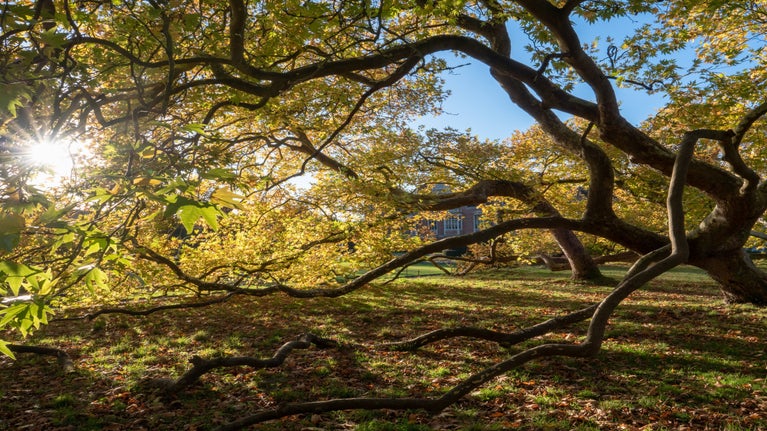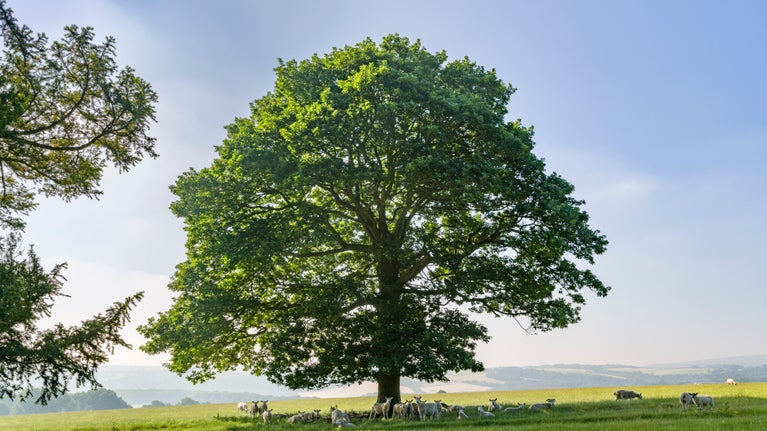
Trees and plants
We care for 25,000 hectares (61,776 acres) of woodland, 135 wild landscape sites and more than 200 gardens, and have as many wonderful stories to tell.

Trees are a source of beauty and tranquility. They're also part of our natural heritage. So why not get to know them better? This guide will help you identify many of the varieties you can see at the places we care for, including some that are thousands of years old.
If there's one tree many people will recognise, it's the oak, thanks to its distinctive leaves and acorns. That's why they've been the logo of the National Trust since 1936.
The size and shape of ash trees varies depending on their age and where they're growing but their distinctive leaves and seeds can help you to identify them. Sadly, the disease ash dieback is currently affecting many ash trees.
Yew trees are one of only three conifers native to the British isles and can live for thousands of years.
Beech trees and hornbeam can be mistaken for one another but there are some important differences when it comes to identifying them.
There are two native species of lime – but despite the name, they're not related to citrus trees.
Alder are usually found near water or in wet ground. They produce catkins and berries that can help you identify them.
Familiar to many of us, there are three helpful ways to spot a sweet chestnut, depending on its age and the time of year.
They have distinctive and similarly shaped leaves and seeds but there are some key ways to tell sycamore and field maple apart.
For more help identifying trees, take a look at our guide to the leaves of 14 of the most common trees to see in the UK.
You can even print it out and tick off how many you spot on your next ramble through the woods.

We care for 25,000 hectares (61,776 acres) of woodland, 135 wild landscape sites and more than 200 gardens, and have as many wonderful stories to tell.
Ancient trees are links to our past, they're species-rich habitats that support countless other organisms. Discover what makes a tree ancient and how to recognise them.

Learn about forest bathing, a way of relaxing and slowing down the mind by immersing yourself in nature. It can help reduce blood pressure, lower stress levels and improve concentration.

Trees provide vital habitats for a range of wildlife and are one of the best natural defences against climate change. This is why we're aiming to plant and establish 20 million trees by 2030. Donate to Plant a Tree and make a difference.

Fungi play a vital role in the natural world, helping break down organic woodland material as part of the decomposition process. Learn all you need to know about these important organisms.

Discover the stories behind some famous British wild flowers and how wildflower meadows support important species from butterflies to bees.

Celebrate the Lake District’s trees with us – ancient trees, veteran trees, trees on nature trails for families to enjoy. Here are some of our favourites.

Ash dieback is a fungal disease affecting the country’s native ash trees. As many as four out of five ash trees may be affected and, where the dying trees could cause a threat to human safety, we need to remove them.
